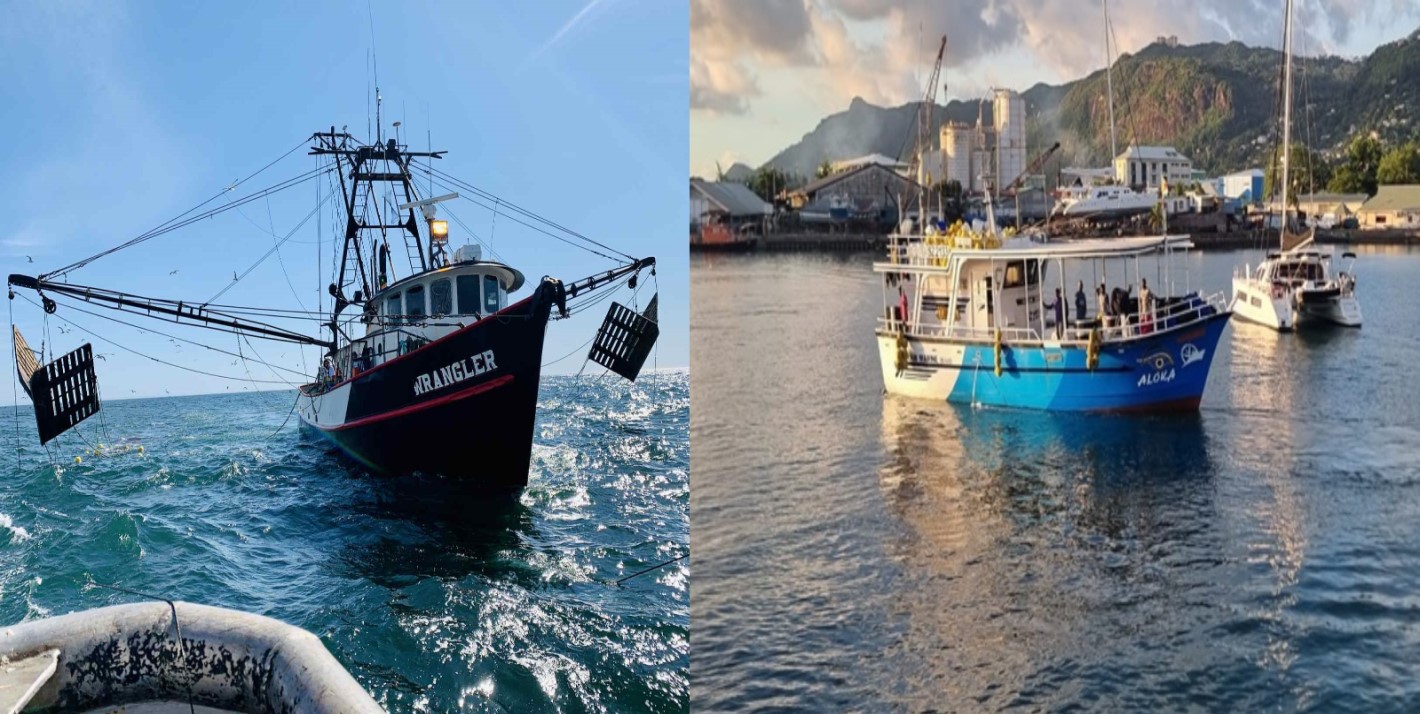FISHTERM bilingual dictionary Search results for 'Industrial fishing' (2 record(s))
| RECORD No. | 102 |
| AUTHOR | ELAD D. F. |
| DATE OF CREATION | |
| LAST UPDATE | 0000-00-00 00:00:00 |
| FRENCH | |||||
| SUBJECT FIELD |
| ||||
| TERM | * Pêche insustrielle statut: préféré ; * Grande pêche (nom féminin) statut: admis ; * Pêche intensive (nom féminin) statut: admis | ||||
| PART OF SPEECH | nom féminin | ||||
| DEFINITION |
Pêche par des navires qui capturent de grandes quantités de poissons, qui préparent souvent le poisson à bord pour le commercialiser. La capture de milliers de tonnes de poisson. | ||||
| PLURAL | Pêches insustrielles ; | ||||
| DEFINITION SOURCE | Fishterm | ||||
| ENGLISH | |||||
| SUBJECT FIELD |
| ||||
| TERM | * Industrial fishing statut: préféré | ||||
| PART OF SPEECH | noun | ||||
| DEFINITION |
Fishing by vessels that catch large quantities of fish, often prepare the fish on board for marketing. Catching thousands of tonnes of fish. | ||||
| DEFINITION SOURCE | Fishterm | ||||
| RECORD No. | 106 |
| AUTHOR | ELAD D. F. |
| DATE OF CREATION | |
| LAST UPDATE | 2024-03-01 00:00:00 |
| ENGLISH | |||||
| SUBJECT FIELD |
| ||||
| TERM | * Semi-industrial fishing statut: préféré | ||||
| PART OF SPEECH | noun | ||||
| PLURAL | Semi-industrial fishing ; | ||||
| ETYMOLOGY | The term " semi - industrial fishing " was formed from three words: semi + industrial + fishing. "Semi - industrial fishing " originated in the mid-20th century. One of the earliest books mentioning "police de la navigation" was published in 1961:
| ||||
| DEFINITION |
Fishing carried out in the public inland waterways or around the shore using small and/or medium-size vessels of less than ten (10) gross registered tonnes and gear of the same type as those used for industrial fishing, and using an outboard engine typically more than thirty (30) horsepower, or an inboard engine with no more than fifty (50) horsepower. | ||||
| DEFINITION SOURCE | Fishterm | ||||
| NOTES | Characteristics of Semi-industrial fishing
| ||||
1. Decree No. 95/413 /PM of 20 June 1995 to lay down certain conditions for the application of fisheries regulations., Chapter I, article 3, paragraph 1:
" Within the meaning of Article 110 of the Act, the following are considered, inter alia as fishing vessels: A) For industrial fishing, trawlers ; - shrimp vessels - longliners - trawlers - sardine vessels - tuna boats. B) For small-scale fishing - traditional canoes or similar; - tailenders "
2. Law No. 94/01 of 20 January 1994 to lay down forestry, wildlife and fisheries regulations in Cameroon, Chapter II, article 117, paragraph 1:
" The right to carry out industrial fishing shall be subject to the obtention of a fishing licence. For the other forms of fishing excluding subsistence, traditional or small-scale fishing, a fishing permit shall be required. "
3. Law No. 94/01 of 20 January 1994 to lay down forestry, wildlife and fisheries regulations in Cameroon, Chapter I, article 146, paragraph 5:
" In the area of industrial fishing, the minister in charge of fisheries may set up a Research and Compounding Committee in each Province. "
3. Images related to 'Industrial fishing'









